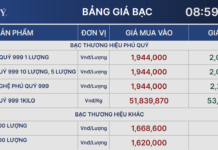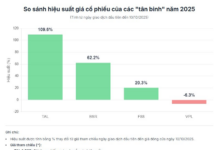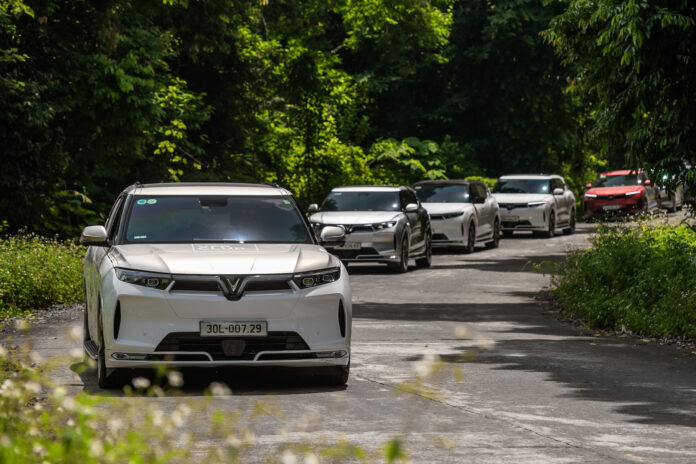Electricsection>
Economic Benefits
In pursuit of the goal to “green” the transportation sector, the World Bank’s report, “Vietnam: Proposal for a Roadmap and National Action Plan for the Transition to Electric Vehicles,” outlines a sales target of 78 million electric vehicles from now until 2050.
The report emphasizes, “The transition to electric vehicles will bring numerous benefits to the economy while enhancing the country’s energy security.”
One of the direct impacts of this transition is the reduction in gasoline and diesel consumption by internal combustion engine vehicles. This holds particular significance for Vietnam, a net importer of fossil fuels.
Based on the usage characteristics and energy efficiency of different vehicle segments, it is estimated that Vietnam has already reaped benefits from reduced fuel demand due to the shift to electric two-wheelers. In 2022 alone, the number of electric two-wheelers in circulation in Vietnam helped reduce gasoline consumption by approximately 390 million liters.
 According to the accelerated carbon emissions reduction scenario, transitioning to electric vehicles will help Vietnam save 498 billion USD in oil imports. Image: Vinfast |
Following the SPS (policy-driven scenario) roadmap, Vietnam is projected to reduce gasoline consumption by 306.401 million liters and diesel consumption by 409.416 million liters by 2050 compared to a “no electric vehicle” scenario.
Under the ADS (accelerated carbon emissions reduction) scenario, the total amount of gasoline and diesel saved by 2050 is estimated to be approximately 360.939 million liters and 524.471 million liters, respectively. This shift will reduce Vietnam’s reliance on oil imports, saving the economy about 498 billion USD during the 2024-2050 period.
Moreoversection>
Job Creation and Environmental Benefits
The transition to electric vehicles is expected to create approximately 6.5 million new jobs in the manufacturing sector in Vietnam by 2050, along with numerous opportunities in the electric vehicle maintenance and repair sector.
Additionally, this shift has the potential to reduce Vietnam’s environmental damage costs due to local air pollution, with estimated savings of 30 million USD by 2030 and 6.4 billion USD by 2050.
Significant Impact on Greenhouse Gas Emissions Reduction
Apart from the economic benefits, Mr. Bowen Wang, the report’s main author, emphasizessection>
In the NDC, Vietnam has set an unconditional target to reduce greenhouse gas emissions by 64.8 million tons of CO2 equivalent (MtCO2eq) by 2030 in the energy-related sector, including transportation. With international support in technology and finance, this target can be increased to 227.0 MtCO2eq.
Achieving the electric vehicle adoption targets set by Decision 876 will contribute to a reduction of 5.3 MtCO2eq in greenhouse gas emissions by 2030. This reduction accounts for about 8% of the unconditional target set for the entire energy-related sector in the NDC.
However, the emission reduction impact of the transition to electric vehicles by 2030 is modest, as most of these vehicles will be two-wheelers. In contrast, the segment dominating road transport emissions up to 2030, freight trucks, has not yet entered the phase of rapid electric vehicle adoption.
After 2030, and especially from 2035 onwards, as the transition to electric vehicles in Vietnam shifts from two-wheelers to passenger cars, freight trucks, and inter-provincial buses, the emission reduction impact will rapidly increase.
If all the electric vehicle adoption targets of Decision 876 are met, the total reduction in greenhouse gas emissions due to the transition to electric vehicles is estimated to be around 226 MtCO2eq, equivalent to a 60% reduction compared to the baseline scenario in the NDC by 2050, according to the World Bank report’s projections.
Notably, the transition to electric vehicles does not need to wait for the power sector to reduce carbon emissions to have an impact.
Historically, electricity generation in Vietnam has heavily relied on fossil fuels, mainly coal and natural gas. Vietnam has also set ambitious targets in the current Power Development Plan VIII to significantly expand renewable energy capacity and shift from coal to natural gas.
As the greening of the electricity grid continues, emissions from the power sector are expected to decrease further. While the decarbonization of the power sector is planned, it will take time.
The report, “Vietnam: Proposal for a Roadmap and National Action Plan for the Transition to Electric Vehicles,” asserts that the transition to electric vehicles will have a significant emission reduction impact regardless of the electricity supply mix on the grid. This is because electric vehicles are far more energy-efficient than their gasoline and diesel counterparts.
The modeling results from the study indicate that emissions from the production, transmission, and distribution of electricity for charging electric vehicles can be easily offset by avoiding the combustion of fossil fuels in gasoline and diesel vehicles.
Even if the proportion of electricity sources in the grid remains unchanged from the 2022 level, the transition to electric vehicles alone will result in a net emission reduction of 2.2 million tons of CO2eq by 2050. If the green grid targets of Power Development Plan VIII are fully achieved, the net emission reduction from the transition to electric vehicles will be 5.3 million tons of CO2eq by 2050.
Currently, road transport is the largest contributor to greenhouse gas emissions, accounting for about 85% of the transport sector’s emissions.
Notably, the combustion of gasoline and diesel by internal combustion engine vehicles releases significant amounts of air pollutants, including nitrogen oxides, sulfur oxides, and particulate matter with a diameter of 10 micrometers or less (PM10). These emissions contribute to local air pollution, causing severe environmental damage and threatening the health of the population.
Therefore, a key benefit of the transition to electric vehicles is the avoidance of air pollutant emissions from internal combustion engine vehicles by shifting to electric alternatives.
By Tam An
The Prime Minister Calls on US Businesses to Enhance Trade and Investment Ties with Vietnam
On November 27, the Vietnam-US Business Summit, themed “Policies and Approaches to Ensure Mutual Benefits in Trade Relations,” took place in Hanoi. This is the seventh time the Vietnam Chamber of Commerce and Industry (VCCI) has collaborated with the American Chamber of Commerce (AmCham) in Hanoi and the US Chamber of Commerce in Washington to organize this prestigious event.
The Slow Fade: How Chinese Cars are Stealing the Asian ‘Stronghold’
Once a dominant force across Asia, this country’s automotive industry is now facing stiff competition from affordable Chinese alternatives.











































